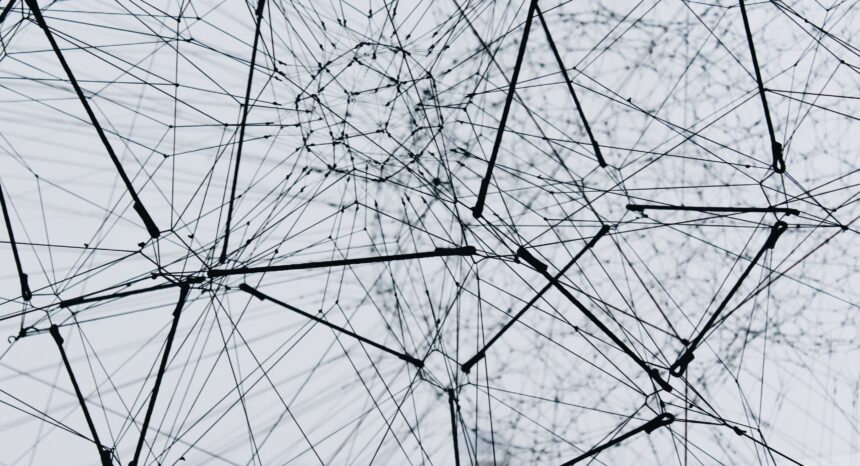Houses are built to stay upright. We eat in them, sleep in them, we produce trash that goes out, and we purchase goods that come in. But when there’s an earthquake, houses that are less structurally sound may collapse. If the house is destroyed, the normal equilibrium of things going in and out changes. New products and services are brought in to rebuild the house. Old products and services become less essential for a time.
The old balance gives way to a new normal.
The same thing happens in economics. When an economic shock hits, markets change. Models that worked before the shock become less useful in explaining, for example, how long a recession will last and how long it will take for economies to recover.
New research in Nature Communications offers a model based on classical physics concepts that can better inform how policy makers respond to economic shocks and how journalists cover them.
“The economy is based on inventing new things, on financing new things, on selling new things, on buying those things, on using these things, and all of these steps are always happening on networks,” says Stefan Thurner, one of the co-authors and president of Complexity Science Hub Vienna, an international research institute. “Networks of balance, networks of distribution, and networks of consumers. So almost anything in the economy works on networks — but in economics these networks have been ignored up until now.”
Applying classical physics to macroeconomics
Economic shocks happen as surely as the sun rises. The researchers borrowed a physics concept called linear response theory to develop an economic susceptibility matrix that can more precisely predict how economies recover from shocks. Using the matrix, the authors identify countries and industrial sectors most susceptible to economic shocks, such as a recession or trade war.
Linear response theory explains how an external force affects a physical system. Think of a house of cards on a tray. Nudge the tray and see which cards move. “If a tiny nudge moves certain cards, you might conclude that those are the first to fall if the tray was pushed harder,” the authors write. With data from the World Input-Output Database covering 2000 to 2014, the authors developed a model that shows how countries and sectors respond when their economic house of cards is nudged — or shocked.
Tariffs: Like throwing a boulder into a lake
Shocks ripple through economic and industrial sectors. The Trump administration’s tariffs last summer on European steel and aluminum represent an economic shock on trade between the U.S. and the European Union. But the effects of those tariffs extend beyond imports and exports of metal.
The authors estimate that there is less energy being used in Europe because the tariffs are leading to less metal production. Because there is less demand for European steel and aluminum in the U.S., they estimate more of those metals are available at lower prices for European companies that make things like cars, computers and electronics. The authors estimate negative effects for U.S. sectors that rely on metals — such as car production or fabricated metal — and positive effects for the electricity sector, land transportation and wholesale trade.
“The primary effect is that Europeans are sending less stuff to the U.S. so it is a deduction of exports,” Thurner says. “But there are secondary consequences. If you don’t export so much aluminum, the aluminum price goes down a little bit. So if you build things out of aluminum, like cars, you can produce those things cheaper. If you look at electricity, which you need to produce aluminum, if you are producing less aluminum, electricity will go down. And when you do this sector by sector, the interesting thing is for most European countries the secondary effects are all positive, sometimes strongly positive. So you have to subtract these secondary effects from the primary effects — it’s really surprising.”
One limitation of the model is that it does not account for prices. In real life, companies can respond to economic shocks by adjusting production and prices.
Countries and sectors susceptible to economic shock
The authors examined more than a decade of input and output data across 43 countries and 56 sectors to understand which parts of country-level economies tend to be most and least affected by economic shock. Some sectors, such as manufacturing and construction, rebounded quickly. Scientific research, air and water transportation and transportation equipment manufacturers were also less affected by economic shocks. Other sectors, such as public administration, real estate, health and wholesale trade were especially shocked.
“We are extracting a network out of the data and you can think of a network as how different industry sectors in the different countries are connected to each other,” Thurner says. “If you shock that network, you see how shocks propagate through the network.”
The authors suggest that countries that are least susceptible to economic shock — Croatia, Greece, Malta, and Luxembourg — have more production concentrated in a smaller number of sectors. Four of the five BRICS countries — Brazil, Russia, India, and China — rank as particularly susceptible. (The researchers excluded South Africa, the fifth country, because of data quality issues.) The authors suggest that above-average growth in those four countries was not built on “resilient economic production structures.”
Insight for journalists
The major takeaway for journalists is that they understand that national and global economies are connected, Thurner says. Economies are not siloed monoliths, and they are almost never in equilibrium.
“The economy is always out of equilibrium,” Thurner says. “Maybe a day or week it is in equilibrium. But in the long run, the economy would be dead if nothing would ever go off. The whole thing is driven by non-equilibrium.”


Expert Commentary